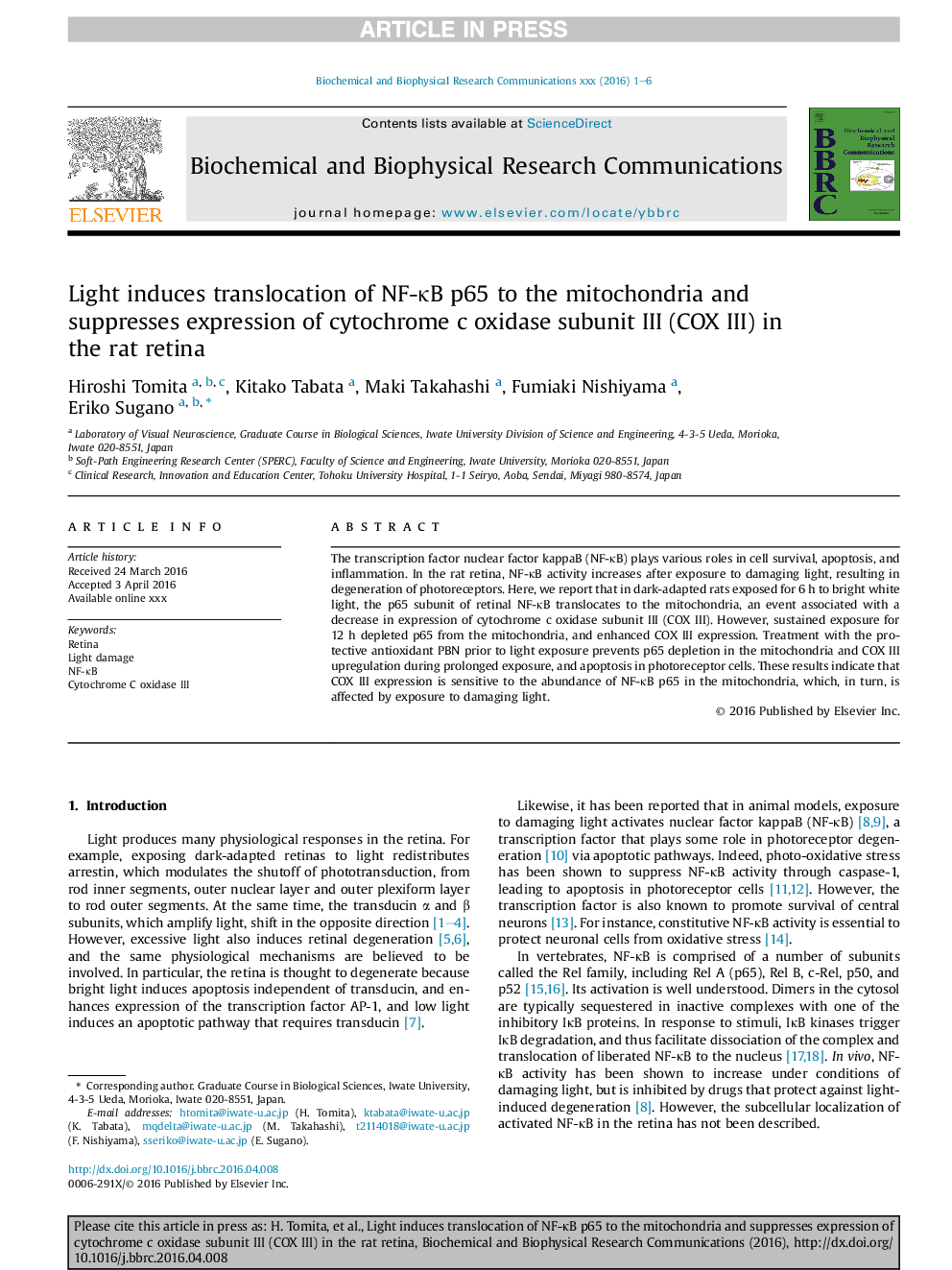| Article ID | Journal | Published Year | Pages | File Type |
|---|---|---|---|---|
| 10748455 | Biochemical and Biophysical Research Communications | 2016 | 6 Pages |
Abstract
The transcription factor nuclear factor kappaB (NF-κB) plays various roles in cell survival, apoptosis, and inflammation. In the rat retina, NF-κB activity increases after exposure to damaging light, resulting in degeneration of photoreceptors. Here, we report that in dark-adapted rats exposed for 6 h to bright white light, the p65 subunit of retinal NF-κB translocates to the mitochondria, an event associated with a decrease in expression of cytochrome c oxidase subunit III (COX III). However, sustained exposure for 12 h depleted p65 from the mitochondria, and enhanced COX III expression. Treatment with the protective antioxidant PBN prior to light exposure prevents p65 depletion in the mitochondria and COX III upregulation during prolonged exposure, and apoptosis in photoreceptor cells. These results indicate that COX III expression is sensitive to the abundance of NF-κB p65 in the mitochondria, which, in turn, is affected by exposure to damaging light.
Keywords
Related Topics
Life Sciences
Biochemistry, Genetics and Molecular Biology
Biochemistry
Authors
Hiroshi Tomita, Kitako Tabata, Maki Takahashi, Fumiaki Nishiyama, Eriko Sugano,
